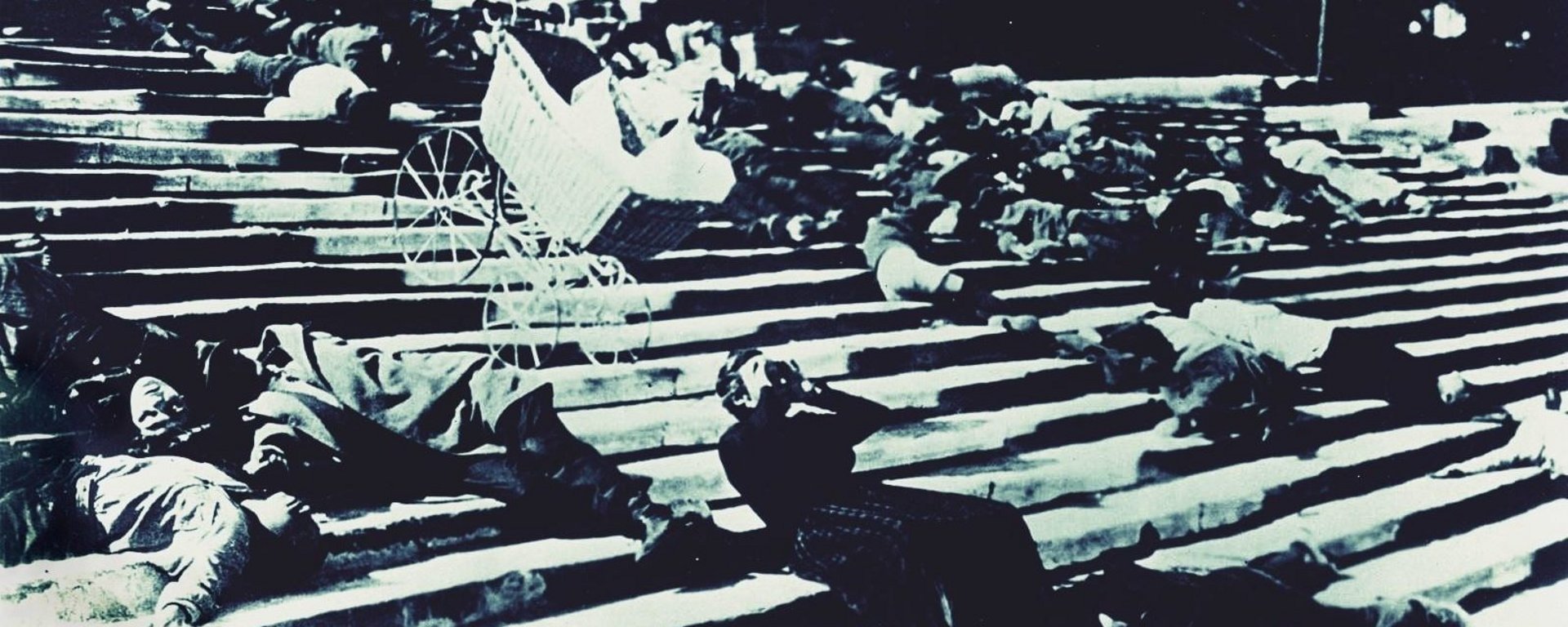
Battleship Potemkin
Sergei Eisentein's silent classic was made in 1925 as a homage to the abortive 1905 Russian naval mutiny. The film, like many Russian silents of the time, was clearly, carefully and powerfully designed as pro-Bolshevik propaganda.
The film was rejected when first submitted to the BBFC in September 1926, on the grounds that films should not address issues of 'political controversy' and that Potemkin's pro-Revolutionary message was therefore unacceptable for classification. The BBFC's Annual Report for 1926 mentions that the film was rejected for "inflammatory subtitles and Bolshevist Proaganda". No doubt at the back of the BBFC's mind was the nine day British general strike in May 1926 which had provoked fears amongst some quarters of society of a potential revolution in the UK. According to The Times, screenings of the film in Berlin had already led to unrest and a censorship battle between left wing supporters of the film and right-wing efforts to have it banned.
Following the BBFC's rejection of the film, Potemkin was submitted to the London County Council and Middlesex County Council for certificates for local screenings. However, the film was rejected by both councils, officially because of its violence.
It was remarked by some at the time that, had violence been the real problem, cuts could have been made. However, the fact that no attempts were made to tone down the film suggested political motives. Moves to submit the film to other local authorities were halted after the film's distributors were visited by the Metropolitan Police. Eventually the film was screened privately (for the Film Society) in 1929 and was subsequently screened a number of times, usually at private performances (eg for workers' educational groups), during the 1930s. Attempts were made to block a number of these screenings, either by the police or by local authorities.
By the time the BBFC was asked to look at the film again, in 1954, silent films were no longer commercially viable and the film was therefore likely to appeal only to a very small and select audience. With its potential to cause political unrest diminished, especially after the death of Stalin in 1953, the film was finally classified X uncut (persons under 16 not admitted). Subsequently the film was reclassified PG uncut for a limited cinema re-release in 1987 and is now acknowledged as a classic.
Political censorship of the cinema was most active during and between the world wars and declined rapidly after 1945.